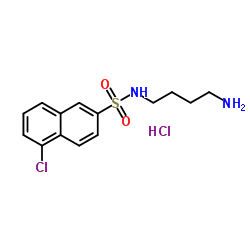Quiescence and γH2AX in neuroblastoma are regulated by ouabain/Na,K-ATPase.
H Hiyoshi, S Abdelhady, L Segerström, B Sveinbjörnsson, M Nuriya, T K Lundgren, L Desfrere, A Miyakawa, M Yasui, P Kogner, J I Johnsen, M Andäng, P Uhlén
Index: Br. J. Cancer 106 , 1807-15, (2012)
Full Text: HTML
Abstract
Cellular quiescence is a state of reversible proliferation arrest that is induced by anti-mitogenic signals. The endogenous cardiac glycoside ouabain is a specific ligand of the ubiquitous sodium pump, Na,K-ATPase, also known to regulate cell growth through unknown signalling pathways.To investigate the role of ouabain/Na,K-ATPase in uncontrolled neuroblastoma growth we used xenografts, flow cytometry, immunostaining, comet assay, real-time PCR, and electrophysiology after various treatment strategies.The ouabain/Na,K-ATPase complex induced quiescence in malignant neuroblastoma. Tumour growth was reduced by >50% when neuroblastoma cells were xenografted into immune-deficient mice that were fed with ouabain. Ouabain-induced S-G2 phase arrest, activated the DNA-damage response (DDR) pathway marker γH2AX, increased the cell cycle regulator p21(Waf1/Cip1) and upregulated the quiescence-specific transcription factor hairy and enhancer of split1 (HES1), causing neuroblastoma cells to ultimately enter G0. Cells re-entered the cell cycle and resumed proliferation, without showing DNA damage, when ouabain was removed.These findings demonstrate a novel action of ouabain/Na,K-ATPase as a regulator of quiescence in neuroblastoma, suggesting that ouabain can be used in chemotherapies to suppress tumour growth and/or arrest cells to increase the therapeutic index in combination therapies.© 2012 Cancer Research UK
Related Compounds
| Structure | Name/CAS No. | Molecular Formula | Articles |
|---|---|---|---|
 |
N-(4-aminobutyl)-5-chloro-2-naphthalenesulfonamide hydrochloride
CAS:88519-57-7 |
C14H18Cl2N2O2S |
|
Calmodulin antagonists induce cell cycle arrest and apoptosi...
2014-01-01 [BMC Cancer 14 , 882, (2014)] |
|
The calmodulin inhibitor CGS 9343B inhibits voltage-dependen...
2015-06-15 [Toxicol. Appl. Pharmacol. 285 , 207-13, (2015)] |
|
CXCL12 and [N33A]CXCL12 in 5637 and HeLa cells: regulating H...
2012-01-01 [PLoS ONE 7(4) , e34432, (2012)] |
|
Calmodulin activity regulates group I metabotropic glutamate...
2016-05-01 [J. Neurosci. Res. 94 , 401-8, (2016)] |
|
A clathrin-dependent pathway leads to KRas signaling on late...
2009-03-23 [J. Cell Biol. 184 , 863-79, (2009)] |